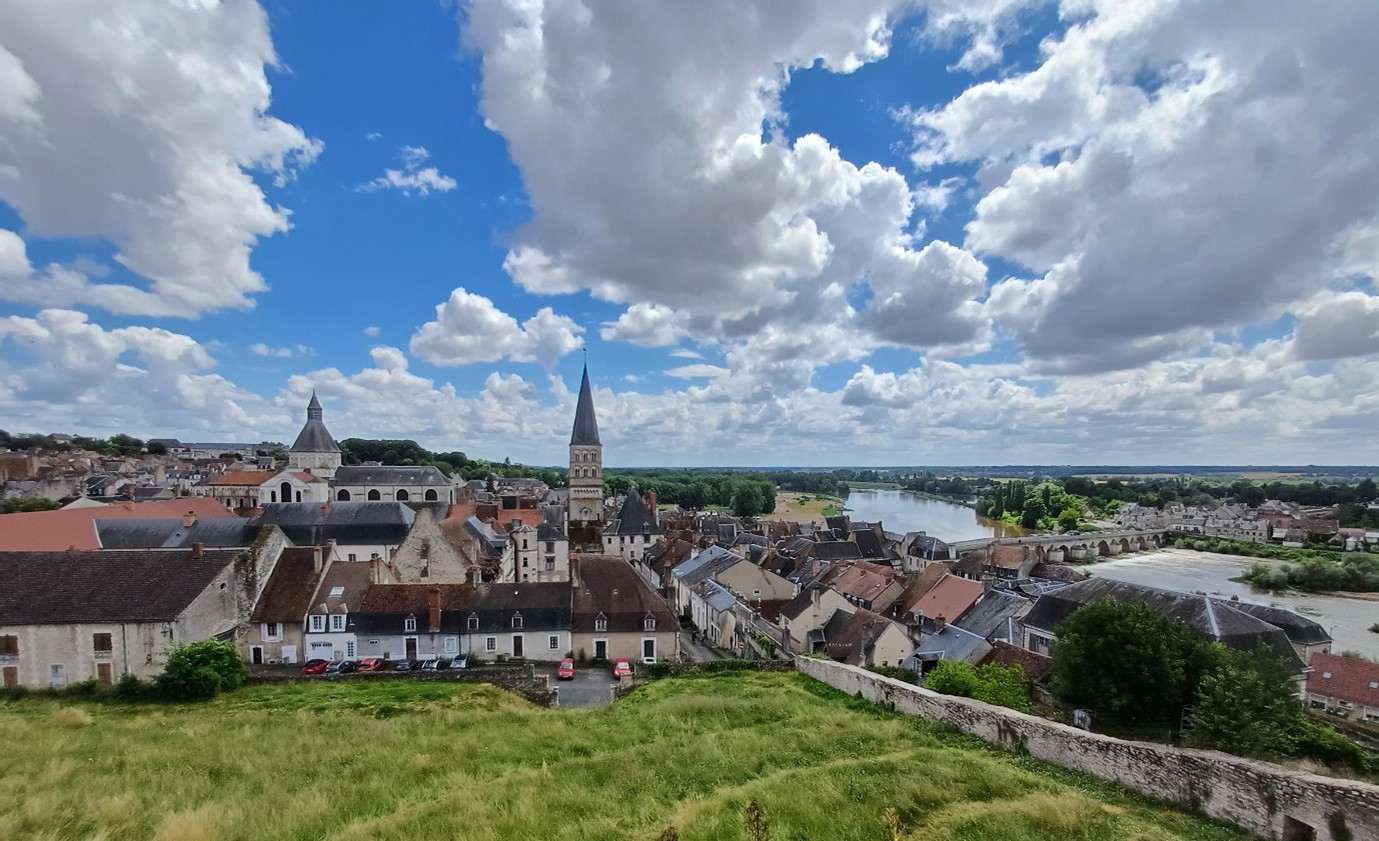
La Charité-sur-Loire, or simply La Charité as it was known until the 1960s, has been a cultural and trading hub for centuries, thanks to its long bridge across the River Loire. In the fourteenth and fifteenth centuries merchants and pilgrims bound for Santiago de Compostela all sought shelter within the town’s walls before crossing the river. The walls remain, as does the impressive stone bridge of 1520 (which replaced a more hazardous ford) and much of the Priory Church of Notre Dame – once one of the largest religious houses in France and now a UNESCO World heritage site. La Charité is noted as a ‘book town’, not quite in the fashion of Hay-on-Wye but nevertheless filled with bookshops and allied trades; publishers, binders, illuminators and calligraphers.
During the Hundred Years War, La Charité suffered much from its position dominating a principal trading route in contested, border territory. In the 1360s, La Charité, described by Froissart as “a large and well inclosed town upon the Loire”, was seized by Anglo-Burgundian mercenaries, unemployed during the lull in fighting which followed the Treaty of Bretigny, taken into the service of Charles the Bad of Navarre. One such rogue, the Bascot de Maulion (whom we shall meet again) told the chronicler Froissart how his company had taken the town by night attack and held La Charité “for a year and a half”.
La Charité was in those days a perfect base from which the disciplined bands of mercenaries, sometimes called the tard-venus or latecomers, could pillage the surrounding countryside. Nominally in the service of Navarre it was accepted that the hireling soldiery would take from the neighbouring peasantry what their ‘lord’ failed to give in pay.
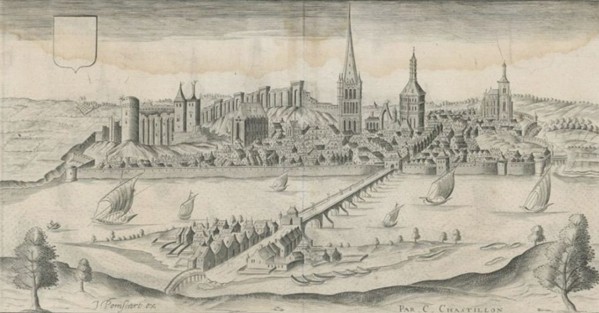
La Charité and its new bridge two centuries after it the town was held by Perrinet Gressart and his men.
La Charité’s walls were “scaled without opposition” in darkness, though the brigands hesitated to push on into the town for fear of ambush in the narrow streets. The delay, according to Froissart, allowed the inhabitants to fill boats with all their possessions and to flee the town. Soon reinforced with three hundred men under the English soldier of fortune, Sir Robert Briquet or Birkett, the freebooters “were in such force, they began to make grievous war upon the kingdom of France” and, as Froissart put it, “did in those parts just what they pleased.”
This misrule was finally ended in 1366 by a strong French force, commanded by Robert de Fiennes, Constable of France and the Marshals Jean I Le Maingre and Jean IV de Mauquenchy, Lord of Blainville, who besieged La Charité; battering at the town walls and blockading the Loire. The freebooters finally came to terms, being forced to quit the town on foot and to take nothing with them.
Control of such a valuable crossing of the Loire ensured that La Charité remained a target of both sides. In 1422 smouldering war was fanned into flames once again when Burgundian troops seized the town. Soon after the town fell again, this time to troops of the Dauphin, but in December 1423 an Anglo-Burgundian force returned and once again took control of La Charité and its vital bridgehead.
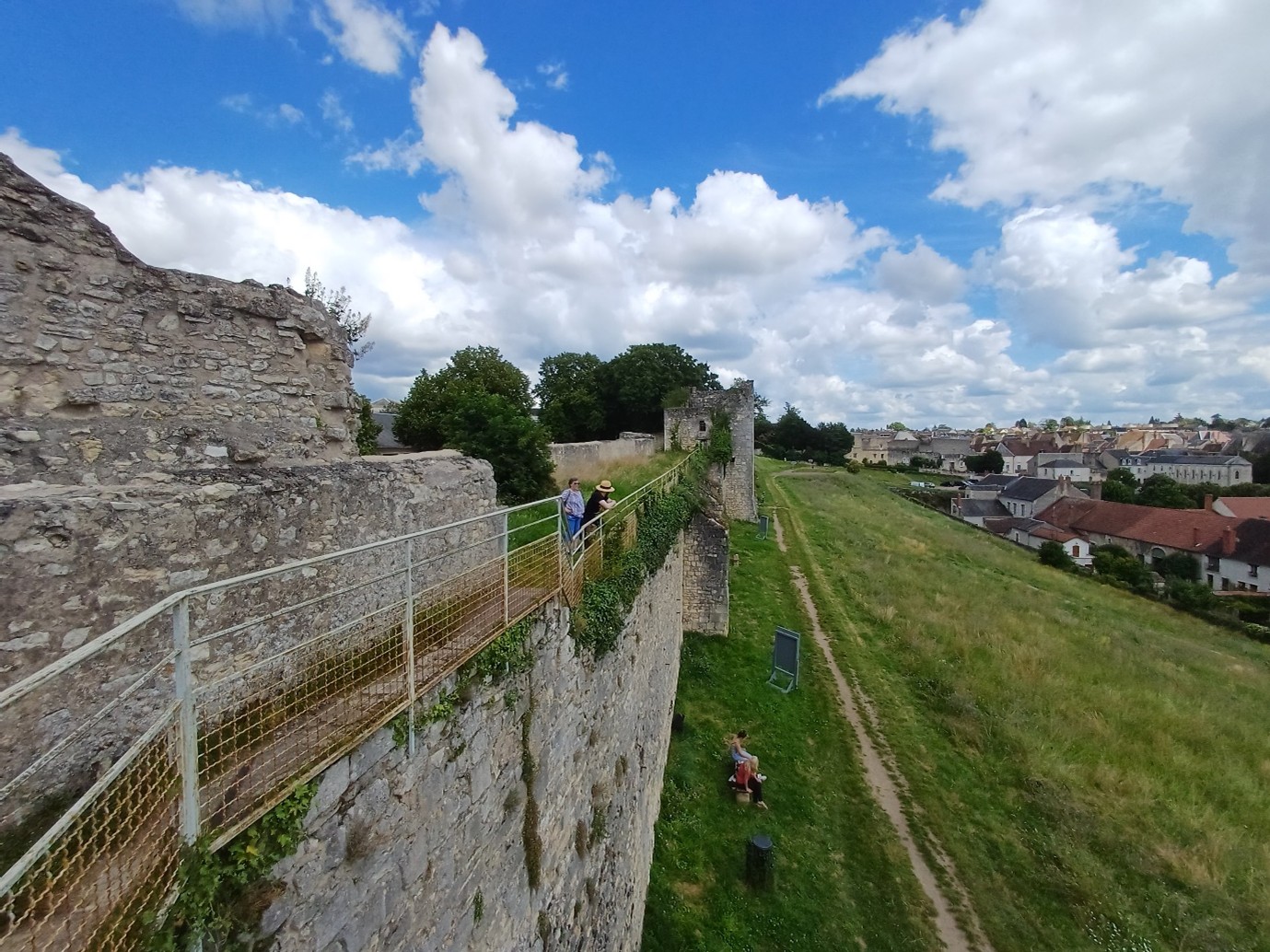
The ramparts above La Charité
Their leader was Perrinet Gressart; one of the most daring and resourceful of the Hundred Years War’s captains. The soldier-chronicler, Jehan de Wavrin, served alongside Gressart and admired him: “he was wise, prudent, and of much enterprise, knowing how to conduct himself in all positions…On account of his capture of La Charité-sur-Loire the French were much grieved, and not without cause, for it was a very convenient passage for them.”
Gressart’s most outrageous exploit dates from this period. At the very end of 1426 he kidnapped the dauphin’s leading minister, Georges de la Trémoille, an unscrupulous intriguer, who was on a diplomatic mission to the Burgundians. The outrage not only resulted in a ransom of 14 000 écus but also in Gressart’s shift in allegiance from Burgundy to the English.
If anything, the significance of La Charité grew with the defeat of the English offensive against Orleans in 1429, as the town once again became a frontier post. Late that year the Dauphin’s council despatched an army against the English outposts in the Nièvre, led by Charles d’Albret (son of the Constable d’Albret killed at Agincourt), Jean de la Brosse, often known as the Marshal de Boussac and Joan of Arc.
In November the walled town of St Pierre le Moutier, some thirty miles south of La Charité was taken from Gressart and d’Albret moved on to besiege him in his base. From Les Moulins, just north of St Pierre, on 9 November 1429, Joan wrote to the people of Riom, capital of the Auvergne, asking “that you will immediately send and donate for the siege gunpowder, saltpeter, sulfur, projectiles, arbalestes and other materials of war. And do well enough in this matter that the [siege] will not be prolonged for lack of gunpowder and other war materials, and that no one can say you were negligent or unwilling”.
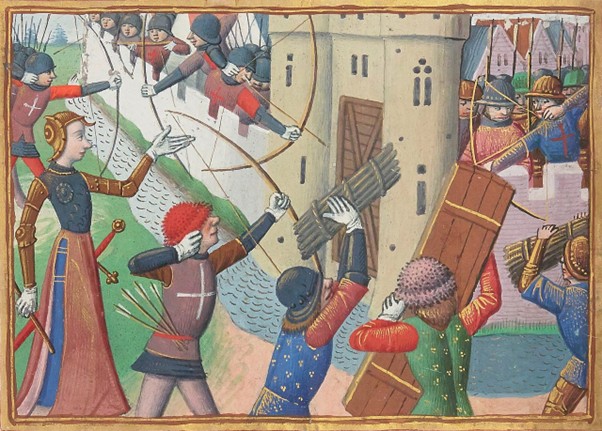
Joan the Maid encourages her troops from the siege trenches
Short of supplies and with the weather against them, the French vainly dug trenches and bombarded the walls of La Charité for the best part of a month before abandoning the siege and most of their artillery; possibly bogged down in muddy roads or perhaps because the draught animals had been eaten. The Maid’s defeat at La Charité was recalled several times in her trial at Rouen, perhaps because of its indication of a lack of Divine favour.
Perrinet Gressart continued to hold on at La Charité – and his troops were still occupying the town when he died in 1438. True to his mercenary nature, however, Gressart had changed his allegiance once again and in 1435 had accepted French pay to become captain of La Charité, not for Henry VI of England, but the soon-to-be Charles VII of France.
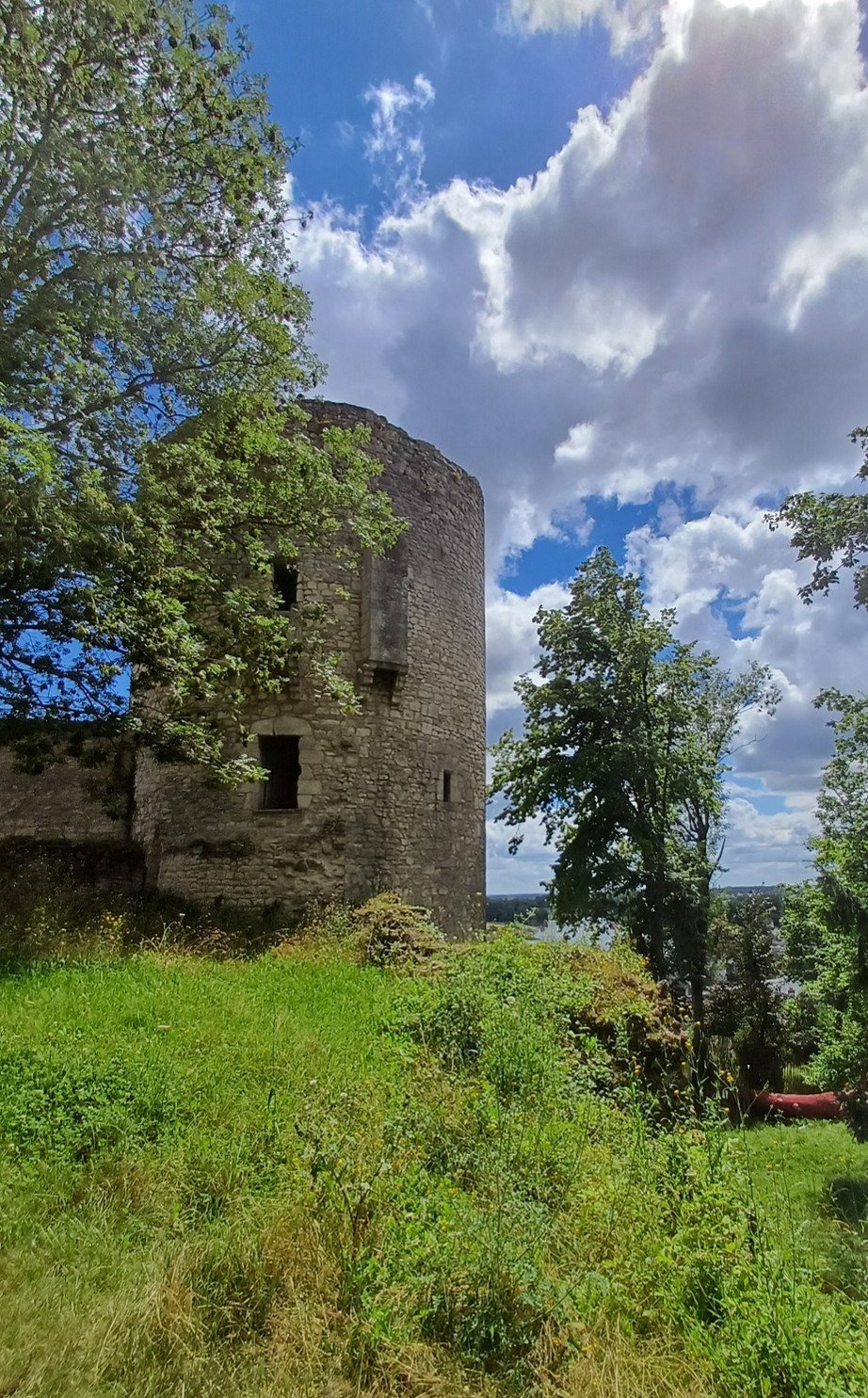
The Perrinet Gressart or Spanish Tower at La Charité
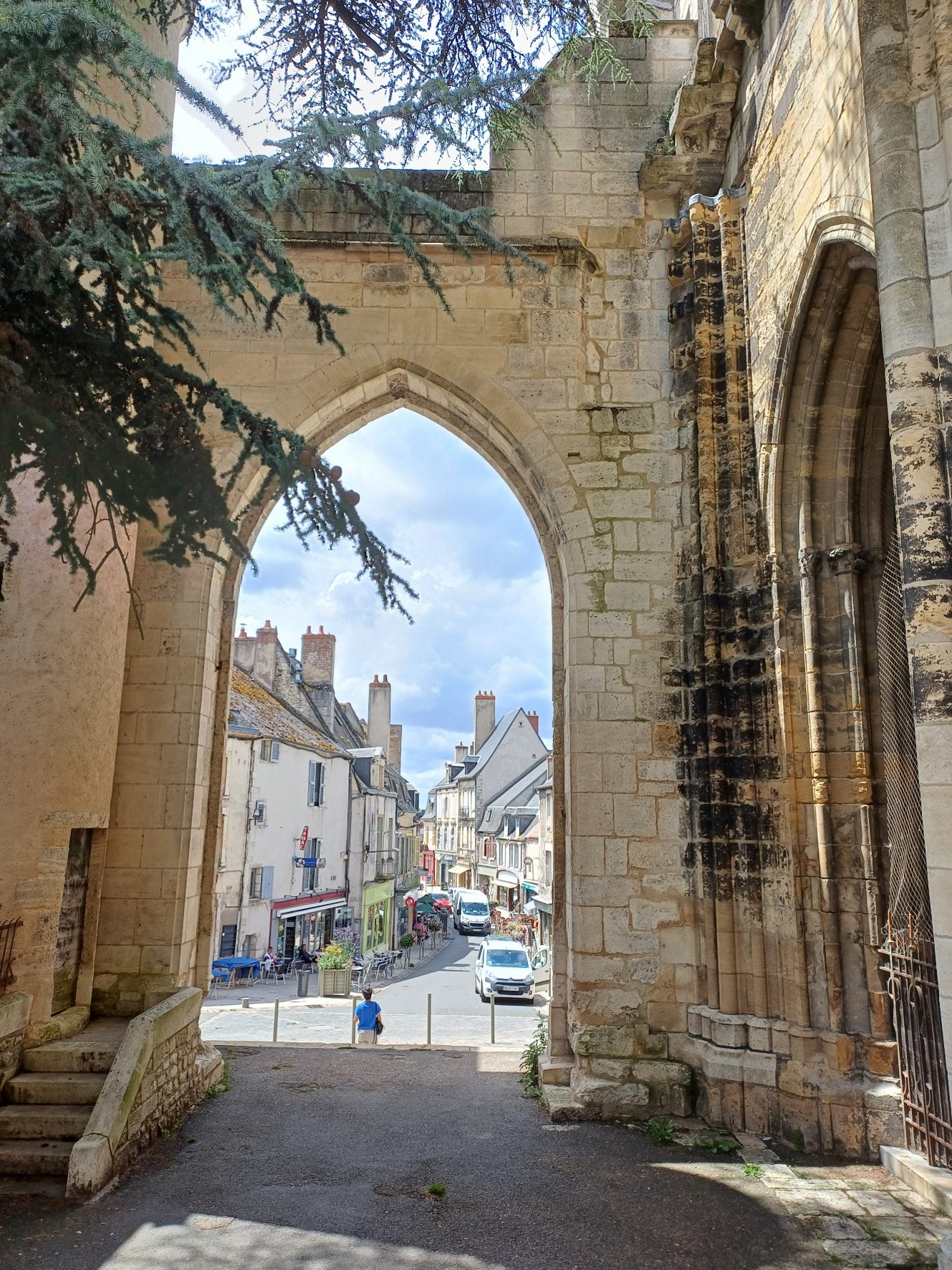
A view from the ruins of La Charité’s once massive abbey towards the all-important bridge over the Loire

